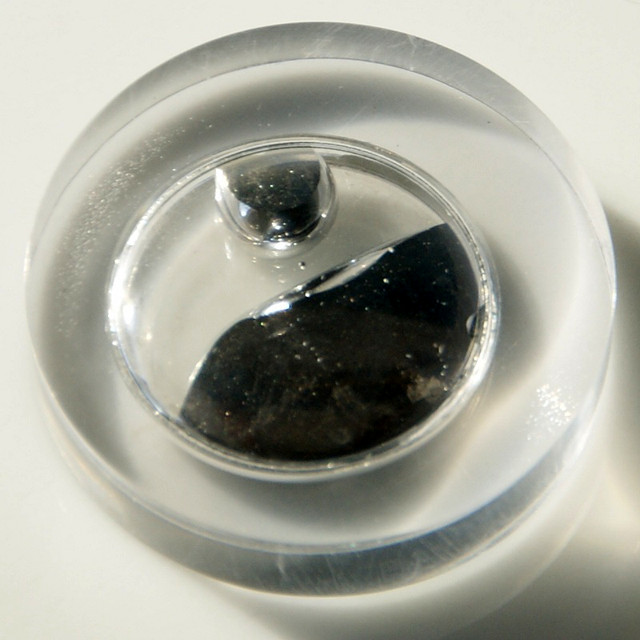
by Mary Caperton Morton Tuesday, October 16, 2018

Mercury, the only metal that is liquid at room temperature, is extremely toxic to humans and has detrimental effects if excreted into the environment. Credit: Hi-Res Images of Chemical Elements (CC by 3.0)
Traditional Tibetan Medicines (TTM) are dispensed in pill form by pharmacists who mix minerals and herbs together in centuries-old recipes. But some of the ingredients may be doing more harm than good. Previous studies have found that mercury and methylmercury, both highly toxic to humans, are sometimes intentionally used in the medications. In a new study, published in Environmental Science & Technology, researchers analyzed total mercury and methylmercury concentrations in seven common TTM remedies and found concentrations as high as 12,000 micrograms per gram and averaging 5,600 micrograms per gram. They found that daily mercury intake by Tibetans who practice traditional medicine was as much as 3,000 times higher than exposure rates in the general populations in Japan, Norway and the U.S.
Contact with even small amounts of mercury can lead to a host of neurological problems and organ system failures, and exposure to methylmercury — an even more potent form of the heavy metal — can lead to paralysis, coma and death. What’s more: Mercury doesn’t stay in the body; it is readily excreted into the environment. Lead author Maodian Liu, of the University of Connecticut and Peking University in Beijing, and colleagues also tested municipal sewage plants in Tibet for mercury content. They estimated that in one year, 3,600 kilograms of mercury — nearly the weight of an adult elephant — were deposited into sewage treatment plants and the environment as a result of TTM use, making it “a major contributor of [environmental] mercury in Tibet,” the team wrote.
© 2008-2021. All rights reserved. Any copying, redistribution or retransmission of any of the contents of this service without the expressed written permission of the American Geosciences Institute is expressly prohibited. Click here for all copyright requests.